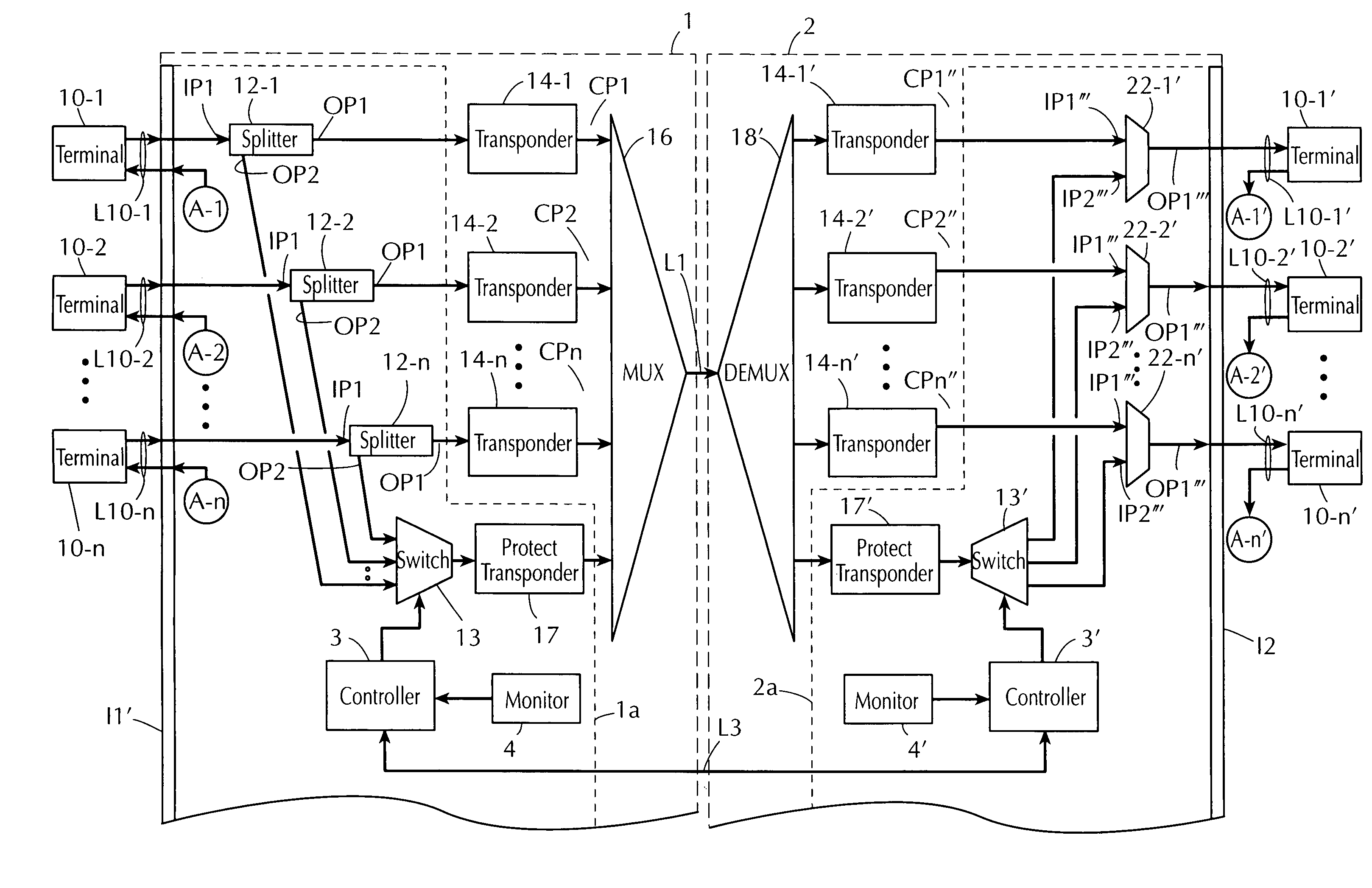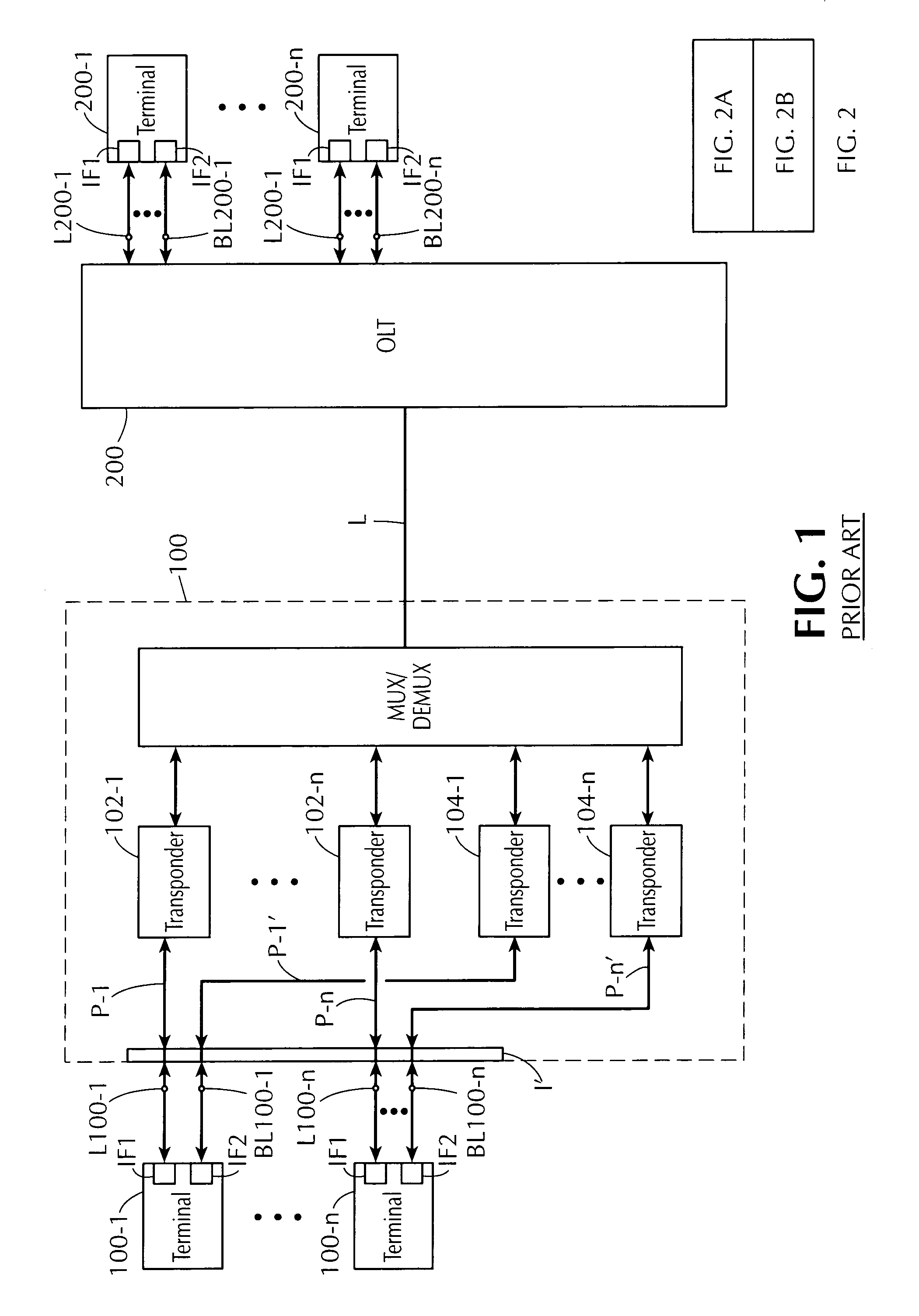1:N protection in an optical terminal
a technology of optical terminals and optical terminals, applied in the field of optical communication networks, can solve the problems of b>100/b> and b>200/b> being generally expensive, and the network described does not provide any failure protection for unprotected terminals
- Summary
- Abstract
- Description
- Claims
- Application Information
AI Technical Summary
Benefits of technology
Problems solved by technology
Method used
Image
Examples
Embodiment Construction
[0032]FIGS. 2a and 2b illustrate a block diagram of a plurality of nodes (also referred to as optical line terminals (OLTs)) 1 and 2 and terminals 10-1 to 10-n and 10-1′ to 10-n′ of an optical communications network that is suitable for practicing this invention. The network is depicted as a point-to-point communications network, although the invention is not limited to being employed only in such networks. For example, the invention may also be implemented in a mesh or point-to-multipoint (chain) communications network.
[0033]The nodes 1 and 2 are coupled together via transmission links L1, L2, and L3, each of which may include, for example, one or more optical fibers (e.g., two unidirectional fibers). In other embodiments of the invention, two or all three of the communication links L1, L2, and L3 may be combined into a single fiber link. The terminals 10-1 to 10-n are bidirectionally coupled to an interface I1 of the node 1 via “working” communication links L10-1 to L10-n, respect...
PUM
 Login to View More
Login to View More Abstract
Description
Claims
Application Information
 Login to View More
Login to View More - R&D
- Intellectual Property
- Life Sciences
- Materials
- Tech Scout
- Unparalleled Data Quality
- Higher Quality Content
- 60% Fewer Hallucinations
Browse by: Latest US Patents, China's latest patents, Technical Efficacy Thesaurus, Application Domain, Technology Topic, Popular Technical Reports.
© 2025 PatSnap. All rights reserved.Legal|Privacy policy|Modern Slavery Act Transparency Statement|Sitemap|About US| Contact US: help@patsnap.com



